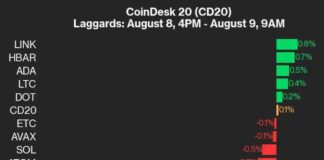The stablecoin market has seen significant growth over the past year, with an all-time high market cap of $171 billion. Major players like Visa, PayPal, Revolut, and Stripe have all entered the stablecoin space, signaling the widespread adoption of these digital assets. Stablecoins have proven to be useful for various purposes, including store of value, means for payments and commerce, trading collateral, and trade settlements between traditional finance and blockchain networks.
While stablecoins like Tether and Circle have been successful in capturing profits from their underlying holdings, new market entrants are now offering yield-bearing stablecoins that pass on these profits to users. Companies like Ethena Labs, Mountain Protocol, Paxos International, BitGo, and the Global Dollar Network are all exploring this model and have seen success in the market.
However, regulatory restrictions in major financial hubs like the U.S. have limited the growth of yield-bearing stablecoins. This has created an opportunity for tokenized money market funds to emerge as competitors to stablecoins. Regulated by the SEC under the Investment Company Act of 1940, tokenized money market funds offer stable value, ease of transfer, and utility in settlements, while also providing steady returns through investments in U.S. treasuries, bonds, and cash-equivalents.
Asset managers like BlackRock and Franklin Templeton have already launched tokenized money market funds, with more players expected to enter the market. BlackRock is even exploring the use of its money market fund and BUIDL token as collateral for derivatives trading on DeFi exchanges. The potential for tokenized money market funds as collateral sources is significant, especially within the growing DeFi market.
While stablecoin issuers may find themselves fighting for market share, the real value of tokenized money market funds lies in their application within traditional financial markets as they transition to digital platforms. However, the full potential of tokenized funds can only be realized with the development of a comprehensive market infrastructure that supports the trading, settlement, and custody of digital asset securities.
As regulated, yield-bearing tokens backed by financial giants gain traction and market infrastructure evolves, stablecoin issuers may face challenges in keeping up with the changing landscape. Tokenized money market funds offer stability, liquidity, regulatory oversight, and steady returns, making them attractive alternatives to traditional stablecoins. The future of the digital asset landscape is evolving, and tokenized funds are poised to play a significant role in shaping this new era of finance.














